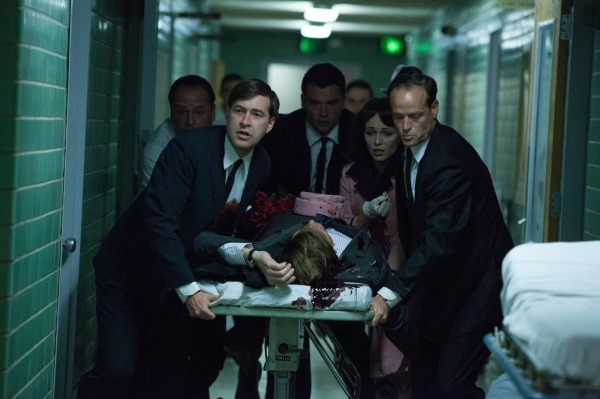“Parkland” opens Friday at Star Cinema and Sundance. PG-13, 1:33, three stars out of four.
You can tell “Parkland” was made by a journalist. Good journalists hunt for telling moments in a story, details that even the subjects might not think are important, but that illuminate matters from an unexpected angle.
“Parkland” is full of such moments. Written and directed by journalist Peter Landesman, based closely on Vincent Bugliosi’s massive work of nonfiction “Four Days in November,” the film dramatizes the events of Nov. 22, 1963 in Dallas, when John F. Kennedy was assassinated.
But it tells the story not through the eyes of main actors of that day, but through bit players on the sidelines, from the FBI agents who failed to follow up on suspicions about Lee Harvey Oswald to the doctors who tried unsuccessfully to save JFK, from Oswald’s baffled brother (James Badge Dale) to Abraham Zapruder (Paul Giamatti), who felt forever cursed by the iconic film footage he took.
At first, I didn’t think this would work, and the film would be a collection of character actors making appropriately shocked and mournful faces. But “Parkland” (executive produced by Tom Hanks) finds those telling moments in the margins, tying them together to show an America unable to process what it was living through.
Ironically, the least compelling part of the movie for me was the activity at Parkland General Hospital, where doctors (Zac Efron and Colin Hanks) tried and failed to save the President’s life, and, a couple days later, his assassin’s. More interesting to me were the Secret Service agents (including Mark Duplass and Gil Bellows), their suits still smeared with the President’s blood, grappling with the magnitude of their failure. I’ll never forget the scene of the agents awkwardly trying to carry the President’s casket up the stairs into Air Force One, ripping out seats and bulkheads to make room. There simply was no plan for something like this.
“Parkland” doesn’t show us the actual assassination — instead, we see Zapruder filming it, his eye popping wide as he realizes what he’s witnessing. If there’s a central character to “Parkland,” it’s Zapruder, the Russian immigrant tortured byhis inadvertent role in history. But also fascinating is Oswald’s family, including his brother and his mother (Jacki Weaver), convinced that her son Lee was a government agent. “I’ll never be ordinary again,” she says proudly and delusionally.
There’s a surreal scene at Oswald’s funeral where nobody shows up except for the family, a couple of Secret Service agents, and reporters. And so Bob Oswald enlists the press to become pallbearers, and the reporters put down their cameras and notebooks and carry his coffin to the gravesite. It’s one of those bizarre details that almost nobody knows about, but shows us how much America was knocked off its axis on Nov. 22, 1963.


Pingback: What’s playing in Madison theaters, Oct. 4-9 | Madison Movie